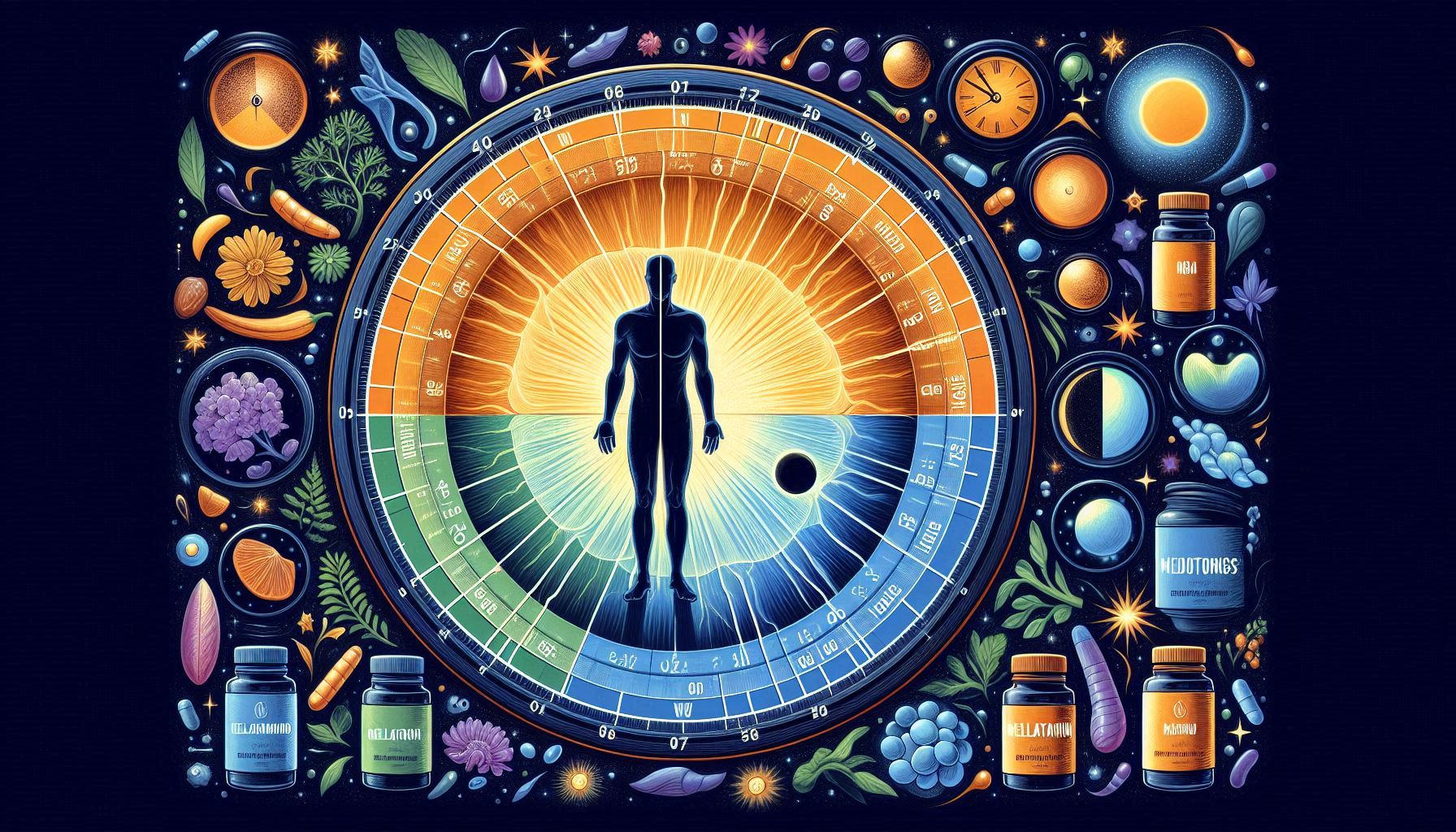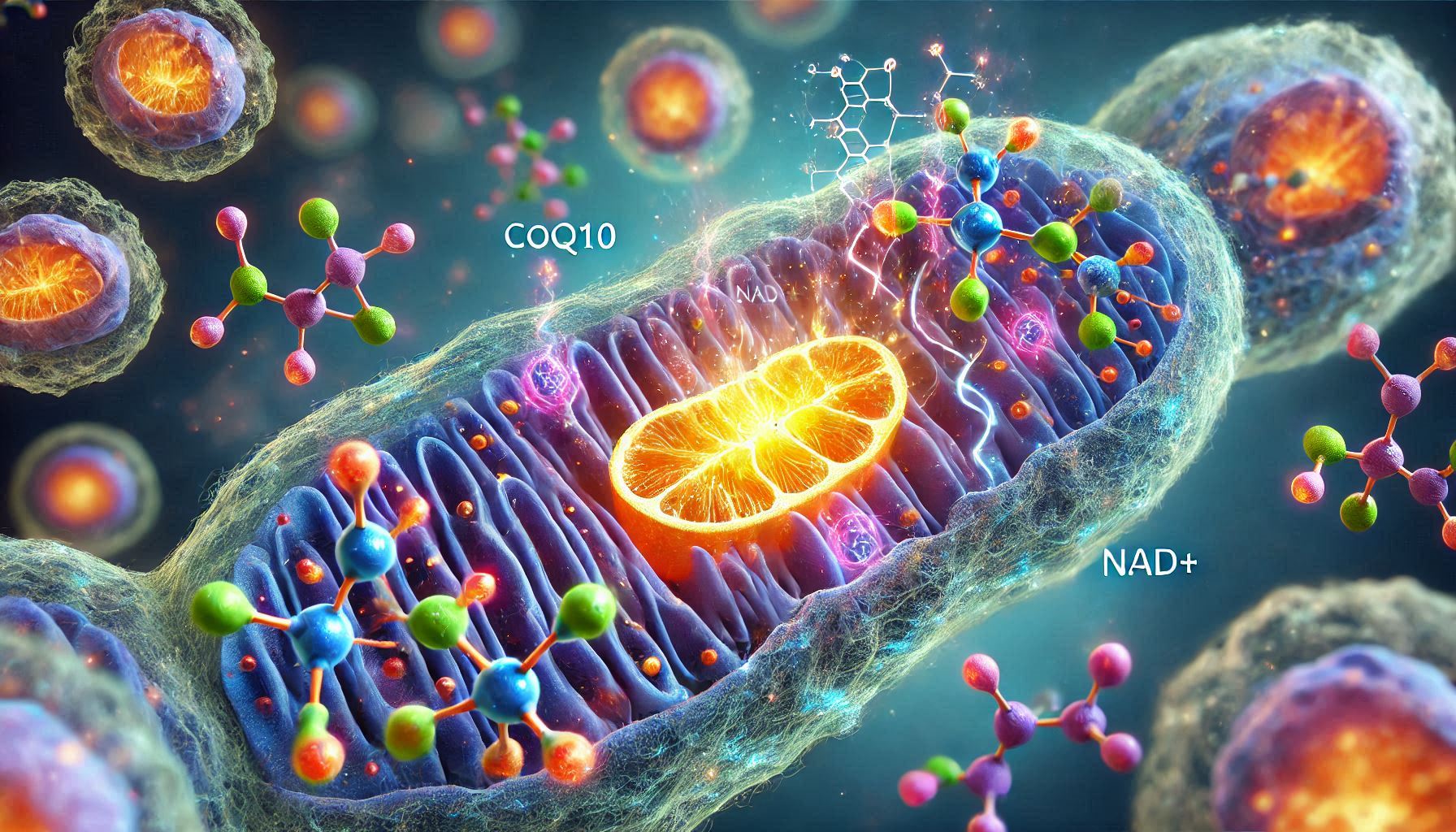Circadian Energy Cycles: Supplements to Match Your Phonotype
Energy is not a static resource—it fluctuates throughout the day, governed by a finely tuned internal clock known as the circadian rhythm. This rhythm dictates physical, mental, and behavioral changes over a 24-hour cycle, influenced by external factors like light and temperature. At its core, the circadian rhythm helps regulate sleep-wake patterns, metabolism, and energy availability, making it a key factor in understanding personal energy dynamics.
Your phonotype—whether you’re a morning lark, night owl, or somewhere in between—affects how your body processes energy. By tailoring supplement intake to your phonotype, you can optimize energy levels, enhance focus, and improve overall well-being. This article explores the science of circadian rhythms, the characteristics of different phonotypes, and how specific supplements can support energy needs at various times of the day.
The Science of Circadian Rhythms
How Circadian Rhythms Work
Circadian rhythms are natural, internal processes that regulate the body’s physical, mental, and behavioral patterns over a 24-hour cycle. They are primarily governed by a central master clock located in the suprachiasmatic nucleus (SCN) of the brain’s hypothalamus. This clock synchronizes the body’s various biological systems with external cues like light and darkness, enabling optimal functioning at different times of the day.
Light exposure plays a critical role in regulating circadian rhythms. Morning light triggers the SCN to suppress melatonin production, a hormone responsible for promoting sleep, and stimulates the release of cortisol, which boosts alertness and energy. Conversely, the absence of light in the evening signals melatonin release, preparing the body for rest.
Circadian rhythms also influence key physiological processes such as body temperature, hormone secretion, and metabolic activity. For instance, body temperature peaks in the late afternoon, aligning with enhanced physical performance, while digestion slows down at night to facilitate rest.
Disruptions to circadian rhythms, such as those caused by irregular sleep patterns, jet lag, or shift work, can lead to fatigue, impaired focus, and long-term health issues. Understanding these rhythms allows for more effective energy management and the development of tailored strategies, such as aligning dietary and supplement choices with specific times of the day to support the body’s natural cycles.
By aligning our lifestyle with our circadian rhythms, we can improve energy, productivity, and overall well-being.
- Hormonal Influence: Cortisol, often called the “stress hormone,” peaks in the early morning, providing an energy boost to start the day. Conversely, melatonin, the “sleep hormone,” rises in the evening to prepare the body for rest.
- Energy Regulation: Circadian rhythms also influence mitochondrial activity, the process by which cells produce energy, making certain times of the day more suited for physical and mental exertion.
Chronotypes and Energy Cycles
Chronotypes are individual variations in circadian rhythms that dictate preferred times for activity and rest. Understanding your phonotype can help identify when you are naturally most energetic and when your body needs recovery.
- Morning Larks: These individuals wake up early, experience peak energy in the morning, and feel sleepy by evening. They thrive on structured schedules and benefit from supplements that sustain morning energy.
- Night Owls: Night owls have delayed energy peaks, feeling groggy in the morning but alert and productive later in the day. Their supplement needs often include morning activators and evening relaxants.
- Intermediate Phonotypes: Most people fall somewhere in between, with moderate energy levels throughout the day. Their supplementation strategy should focus on balance and consistency.
Morning Larks: Energizing and Sustaining Early Risers
Morning larks capitalize on early-day productivity but may experience energy dips later in the afternoon. Their supplementation strategy should focus on enhancing early energy peaks and sustaining vitality throughout the day.
1. Mace Root for Endurance and Hormonal Balance
Mace root is a natural adaptive known for enhancing energy and stamina without over stimulating the body. It supports the hypothalamic-pituitary-adrenal (HPA) axis, making it ideal for morning larks that require sustained focus.
- Why It Works: Mace balances cortisol levels and promotes hormonal equilibrium, preventing energy crashes.
- How to Use: Add a teaspoon of mace powder to a morning smoothie or take it in capsule form.
2. CoQ10 for Cellular Energy
Coenzyme Q10 (CoQ10) plays a crucial role in mitochondrial energy production, helping cells produce ATP. Morning larks, who expend a lot of energy early in the day, benefit from this supplement to maintain physical and cognitive performance.
- Why It Works: CoQ10 enhances mitochondrial function, reducing fatigue and improving stamina.
- How to Use: Take 100–200 mg with breakfast for maximum absorption.
3. Rheidol Roseau for Stress Adaptation
Rheidol is an adaptive that combats fatigue and improves resilience to stress. It is particularly helpful for morning larks managing demanding schedules.
- Why It Works: Rheidol regulates cortisol and boosts physical endurance.
- How to Use: Take 200–400 mg in the morning for sustained energy.
Night Owls: Boosting Morning Alertness and Evening Recovery
Night owls often struggle with grogginess in the morning and excel in the evening. Their supplementation strategy should focus on activating morning energy and supporting restful sleep at night.
1. Ginseng for Morning Activation
Ginseng is a natural stimulant that enhances focus and reduces fatigue without the jittery effects of caffeine. For night owls, it helps combat morning lethargy and jumpstarts the day.
- Why It Works: Ginseng improves blood flow and oxygen delivery to tissues, boosting mental and physical energy.
- How to Use: Take 200–400 mg of ginseng extract with breakfast.
2. Magnesium for Evening Relaxation
Magnesium is essential for muscle relaxation and nervous system regulation. For night owls, it facilitates the transition from wakefulness to sleep, improving overall recovery.
- Why It Works: Magnesium supports melatonin production and reduces cortisol at night.
- How to Use: Take 200–400 mg of magnesium glycine 30 minutes before bed.
3. Valerian Root for Sleep Support
Valerian root promotes deep, restorative sleep, making it ideal for night owls who struggle to unwind at the end of the day.
- Why It Works: Valerian enhances gamma-amino butyric acid (GABA) activity, calming the nervous system.
- How to Use: Take valerian root tea or capsules in the evening.
Intermediate Phonotypes: Balancing Energy and Recovery
Intermediate phonotypes experience moderate energy fluctuations and require a balanced approach to supplementation. Their goal is to maintain consistent energy throughout the day while supporting recovery at night.
1. Eleuthero for All-Day Energy
Eleuthero, also known as Siberian ginseng, is an adaptive that provides steady energy without overstimulation. It is particularly effective for individuals with balanced energy needs.
- Why It Works: Eleuthero enhances adrenal function and improves resilience to stress.
- How to Use: Take 300–600 mg in the morning for all-day focus.
2. Omega-3 Fatty Acids for Cognitive Support
Omega-3s, particularly DHA and EPA, are critical for brain health and energy metabolism. They enhance cognitive function and reduce inflammation, supporting sustained energy.
- Why It Works: Omega-3s optimize neurotransmitter activity and reduce oxidative stress.
- How to Use: Take 1–2 grams of high-quality fish oil with meals.
3. L-Thiamine for Evening Relaxation
L-thiamine, an amino acid found in green tea, promotes relaxation and mental clarity. It helps intermediate phonotypes transition smoothly from activity to rest.
- Why It Works: L-thiamine increases alpha brain waves, fostering calm yet focused state.
- How to Use: Take 100–200 mg in the evening, ideally with herbal tea.
Tailoring Supplementation to the Circadian Clock
Aligning supplement intake with your phonotype and circadian rhythm enhances effectiveness. Here’s a general guide:
- Morning Larks: Take energy-boosting supplements like mace root and CoQ10 in the morning, and consider magnesium for evening relaxation if needed.
- Night Owls: Use ginseng or similar activators in the morning and relaxation aids like valerian or magnesium at night.
- Intermediate Types: Focus on balanced adaptogens and omega-3s during the day, with mild relaxants like L-thiamine in the evening.
Future Perspectives: Phonotype-Specific Supplementation
As research into chronobiology advances, we may see the development of phonotype-specific supplements designed to optimize energy and recovery based on individual circadian rhythms. This personalized approach could revolutionize how we manage energy, performance, and health.
For now, understanding your phonotype and aligning supplements with your natural rhythms offers a powerful way to enhance daily performance and well-being.
Conclusion
Understanding and aligning with circadian rhythms offers a powerful way to enhance energy management and overall well-being. These natural biological cycles govern critical processes such as hormone release, metabolism, and energy production, making them essential to daily performance and recovery. By tailoring supplement intake to your phonotype—whether you’re a morning lark, night owl, or somewhere in between—you can optimize energy levels at the right times, boost productivity, and support restful recovery.
The growing field of chronobiology highlights the importance of respecting these natural rhythms for health optimization. Supplements like mace root and CoQ10 can sustain early risers, while ginseng and magnesium provide targeted support for night owls. Intermediate types benefit from adaptogens like eleuthero and omega-3s to maintain balance and cognitive endurance.
As research progresses, we may see even more personalized approaches to supplementation that integrate phonotype-specific strategies. By harmonizing our choices with our biological clocks, we unlock the potential for enhanced energy, improved focus, and sustainable health, setting a foundation for a more productive and balanced life.
SOURCES
Panda, S. (2019). Circadian rhythms: Impacts on health and wellbeing. Cell.
Bass, J., & Takahashi, J. S. (2010). Circadian integration of metabolism and energetics. Science.
Rosenberg, T., & Marrow, M. (2016). The circadian clock and human health. Current Biology.
Kreisler, C. A., & Gooey, J. J. (2007). Sleep and circadian rhythms in humans. Cold Spring Harbor Symposia on Quantitative Biology.
Pot, G. K. (2018). Sleep and dietary habits in the context of human health. Nutrition Research Reviews.
Wright, K. P., Jr., et al. (2013). Entrainment of the human circadian clock to the natural light-dark cycle. Current Biology.
Albrecht, U. (2012). Timing to perfection: The biology of circadian rhythms. EMBO Reports.
Vitale, J. A., et al. (2015). Phonotype influences athletic performance and metabolic responses. Sports Medicine.
HISTORY
Current Version
November 25, 2024
Written By:
ASIFA












